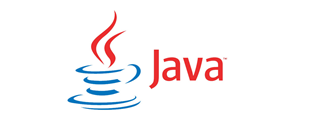Ascio Web Service v2
Java Axis CreateDnsSecKey
DNSSEC is an extension to DNS that enables clients (like a web browser) to make sure that it is
accessing the domain that wants to access. DNSSEC was designed to protect clients from forged DNS data. When a DNSSEC-enabled name server is responding to a query for a domain that is DNSSEC-enabled, it
digitally signs the response, allowing the client to verify the authenticity of the response.
AWS allows you to register domains that are DNSSEC-enabled with the NIC. Note that the relevant NIC
needs to support DNSSEC for this to happen. You do this by creating DNSSEC Key Objects (handles), and you then specify up to five of these on your
orders. At the time of writing, AWS only supports DNSSEC for .SE, .FI, .EU, .NL. Refer to the relevant TLD Kits for additional information.
Also see the documentation for the DnsSecKey object in this document. Additional reading: http://en.wikipedia.org/wiki/Dnssec
Always get the right IP-address

Response CreateDnsSecKey(string sessionId,DnsSecKey dnsSecKey)Response codes
| ResultCode | Message | Value |
|---|---|---|
| 200 | OK | |
| 401 | Authorization failed | |
| 501 | Syntax error in parameters or arguments | |
| 506 | Required attribute missing in request |
CreateDnsSecKey Request
| Property | Description |
|---|---|
| sessionId | Example: o58t9fjgw9bjarp6q7byv13e |
| dnsSecKey |
CreateDnsSecKeyResponse
| Property |
|---|
| CreateDnsSecKeyResult |
| dnsSecKey |
Java Axis example
package ascio.v2.examples;
import com.ascio.www._2007._01.*;
import com.ascio.www._2007._01.holders.*;
import ascio.lib.*;
public class CreateDnsSecKeyExample {
public static Response main() {
AscioConfig config = new AscioConfig();
V2 env = config.getTesting().getV2();
DnsSecKey dnsSecKey = new DnsSecKey();
dnsSecKey.setDigestAlgorithm("RSA-SHA256");
dnsSecKey.setDigestType("SHA-256");
dnsSecKey.setDigest("846E5ED4AB6788032B89393619752F662CF2B7B2046A8EC0804DF88F1469AC1E");
dnsSecKey.setKeyTag("2224");
dnsSecKey.setPublicKey("PublicKeyTest");
DSA-SHA1 (3), RSA-SHA1 (5), DSA-SHA1-NSEC3 (6), RSA-SHA1-NSEC3 (7), RSA-SHA256 (8), RSA-SHA512 (10), ECC-GOST (12), ECDSAP256-SHA256 (13)SHA-1 (1), SHA-256 (2)
try {
/**inputs holders*/
DnsSecKeyHolder dnsSecKeyHolder = new DnsSecKeyHolder(dnsSecKey);
Response response = env.getClient().createDnsSecKey(env.getSessionId(), dnsSecKeyHolder);
System.out.println("CreateDnsSecKey ResultCode\t: " + response.getResultCode().toString());
System.out.println("CreateDnsSecKey Message\t: " + response.getMessage());
System.out.println("Created Handle\t: " + dnsSecKeyHolder.value.getHandle());
if(response.getResultCode() == 400) {
for( String value : response.getValues()) {
System.out.println("Error: " + value);
}
}
return response;
} catch (Exception e) {
System.out.print(e);
}
return new Response();package ascio.v2.examples;
import com.ascio.www._2007._01.*;
import com.ascio.www._2007._01.holders.*;
import ascio.lib.*;
public class CreateDnsSecKeyExample {
public static Response main() {
AscioConfig config = new AscioConfig();
V2 env = config.getTesting().getV2();
DnsSecKey dnsSecKey = new DnsSecKey();
dnsSecKey.setDigestAlgorithm("RSA-SHA256");
dnsSecKey.setDigestType("SHA-256");
dnsSecKey.setDigest("846E5ED4AB6788032B89393619752F662CF2B7B2046A8EC0804DF88F1469AC1E");
dnsSecKey.setKeyTag("2224");
dnsSecKey.setPublicKey("PublicKeyTest");
try {
/**inputs holders*/
DnsSecKeyHolder dnsSecKeyHolder = new DnsSecKeyHolder(dnsSecKey);
Response response = env.getClient().createDnsSecKey(env.getSessionId(), dnsSecKeyHolder);
System.out.println("CreateDnsSecKey ResultCode\t: " + response.getResultCode().toString());
System.out.println("CreateDnsSecKey Message\t: " + response.getMessage());
System.out.println("Created Handle\t: " + dnsSecKeyHolder.value.getHandle());
if(response.getResultCode() == 400) {
for( String value : response.getValues()) {
System.out.println("Error: " + value);
}
}
return response;
} catch (Exception e) {
System.out.print(e);
}
return new Response();https://aws.demo.ascio.com/2012/01/01/AscioService.wsdl (OTE)
https://aws.ascio.com/2012/01/01/AscioService.wsdl (Live)
Please configure the IP-Whitelisting in the portal/demo-portal.